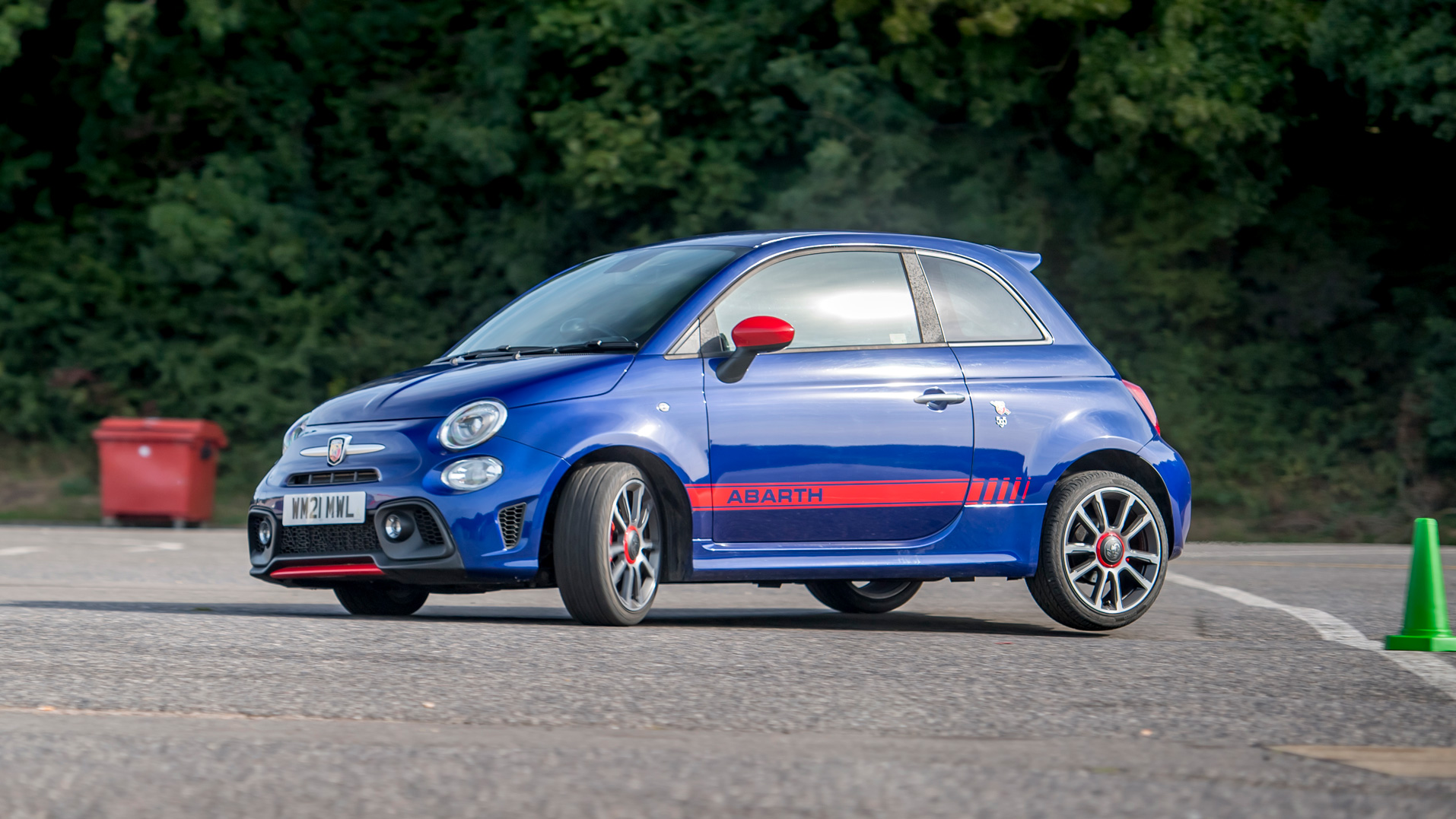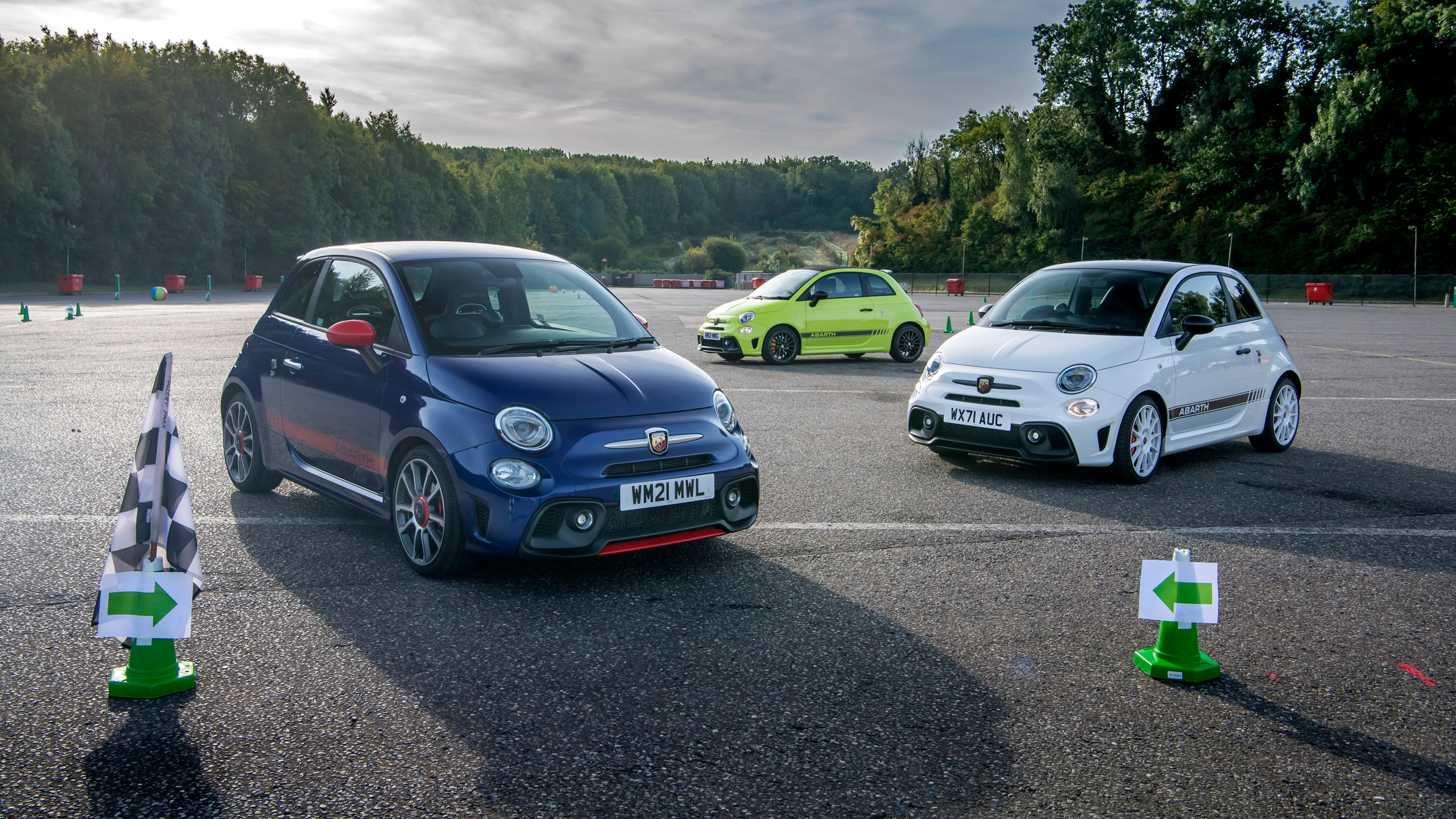
How to do a handbrake turn
How do you perform a handbrake turn? Learn this age-old skill before the electronic parking brake consigns it to history
Like map reading and knowing your mum’s phone number off by heart, you can add the humble handbrake turn to the list of skills that are dying out in the modern world.
That’s because the handbrake itself is dying out: fewer manufacturers are using them in new cars now, having discovered a less conspicuous electric parking brake frees up room to stow phones, coffee cups and other paraphernalia. Yep, it’s all Steve Jobs and Starbucks’ fault.
However, the recent boom in used cars means the physical handbrake will still feature in our lives for a good while yet. And if Renault gets round to building its R5 TURBO 3E drift machine, perhaps even the electric car won’t kill off the physical handbrake entirely.
With the above in mind, Abarth - which claims to be the only mainstream manufacturer left offering a manual handbrake across its entire range - decided to arrange a handbrake turn masterclass with a team of experts at Brands Hatch.
Ignoring that Abarth’s ‘entire range’ amounts to, er, two cars (the 595 and 695) at the moment, what better way to learn the fine art of the handbrake by abusing one with merry abandon in a cone-laden car park?
You’ll find our step-by-step to the perfect handbrake turn below. And yes, the Noob-grade sunglasses displayed in the gallery above are indeed optional (and quite obviously not fashionable).
Before you start
Don’t - and we can’t stress this strongly enough - ever attempt a handbrake turn in a public space, especially one containing Other People and Things. Deliberately inducing a skid is the kind of behaviour the police tend to frown upon, no matter how accurately you dissect the trolley bays and lamp posts at your local supermarket car park.
Also be aware that repeatedly yanking on the handbrake and sliding the rear wheels means that you’ll almost certainly need to replace those parts sooner rather than later. Moderation - or simply owning deep pockets - is key.
How to do a handbrake turn
Step one: build up speed
If you’ve never done a handbrake turn before, you’ll be surprised how vigorous you need to be nail the manoeuvre. But that’s ok: better to start slow and build up to it than overcook it first time out.
First gear is fine, and you shouldn’t need to be going more than 25mph for an effective handbrake turn. Assuming you're in a RHD car, have your right hand on the left side of the steering wheel: we found the seven o’clock position worked best, but some go for 11 o’clock instead. Meanwhile, have your left hand on the handbrake.
Top Gear
Newsletter
Thank you for subscribing to our newsletter. Look out for your regular round-up of news, reviews and offers in your inbox.
Get all the latest news, reviews and exclusives, direct to your inbox.
Step two: induce weight transfer
It really helps to have the weight of the car on the outside of your turn, so if you’re aiming for a stylish 180 to the right, start with a scandi flick to the left. And vice versa. That’ll mean the car’s mass will shift more decisively when you make your turn.
Step three: apply steering lock (quickly)
Begin whipping the steering wheel around in the direction you want to travel. The faster you can do this, the better, as it’s the rapid change in direction that’ll cause the rear wheels to lose grip. Note that you’re not aiming for full lock: do that and your car will suffer the same fate as the white 595 in the gallery above, which departed on a truck with a broken driveshaft. Oops.
If you’re a novice this’ll take a bit of practice: we found going right was easier than going left, as your right arm initially comes back across your body, rather than away from it.
Step four: deploy the handbrake
It’s time to use the handbrake. Timing is crucial here: if you imagine a semi-circle representing your 180-degree turn, you’re aiming to lock the rear wheels roughly 45 degrees into the arc. Go too early and the back end won’t get loose enough to slide; too late and your handbrake turn will be pitiful.
Step five: adjust the steering and throttle
During the handbrake turn, you can use the steering wheel and throttle to control the trajectory of your slide. Add in more lock and power if you need a tighter, longer turn; let out some lock and reduce power if you feel you’re over-egging it.
You shouldn’t need to depress the clutch at any point, nor should you need to hit the brakes. Unless that wheelie bin in the distance unexpectedly becomes a nearby feature all of a sudden.
Step six: power out of the turn
Having kept the handbrake button depressed with your thumb throughout, you’re now free to release the handbrake. Gently apply more throttle as the rear wheels begin to grip up again, then power onwards towards your next attempt. Congratulations, you’ve successfully performed a handbrake turn! Colin McRae would be proud.
TG’s top tips
Practice makes perfect
Have a few goes in a row so you get the coordination of each step down to a tee and build up some muscle memory. After a minute or two make sure your car gets a good rest: you don’t want to cook the clutch or push any other component to breaking point. Remember, even though cars can do this, it doesn’t mean they were designed to.
Smooth is fast
For your first few goes it’ll feel like you’ve lost sight of your arms in a blizzard of movement, but eventually your brain will get up to speed and slow everything down. Being smooth and gentle will yield the best results (and prolong your car’s lifespan).
Time doesn’t heal all wounds
Do enough handbrake turns and you’ll eventually wear out your handbrake cable, with repeated yanking lengthening it over time and making it less effective. Spend a day honing your skills and you’ll soon notice the drop-off in your car’s ability to wield its handbrake sharply. A new cable will be required.
Same goes for the tyres: once you’ve worn them away, the rubber won’t magically grow back. Keep a careful eye on the tread depth, and head to the garage if those grooves begin to look shallow.
Trending this week
- Car Review
BMW 1 Series









